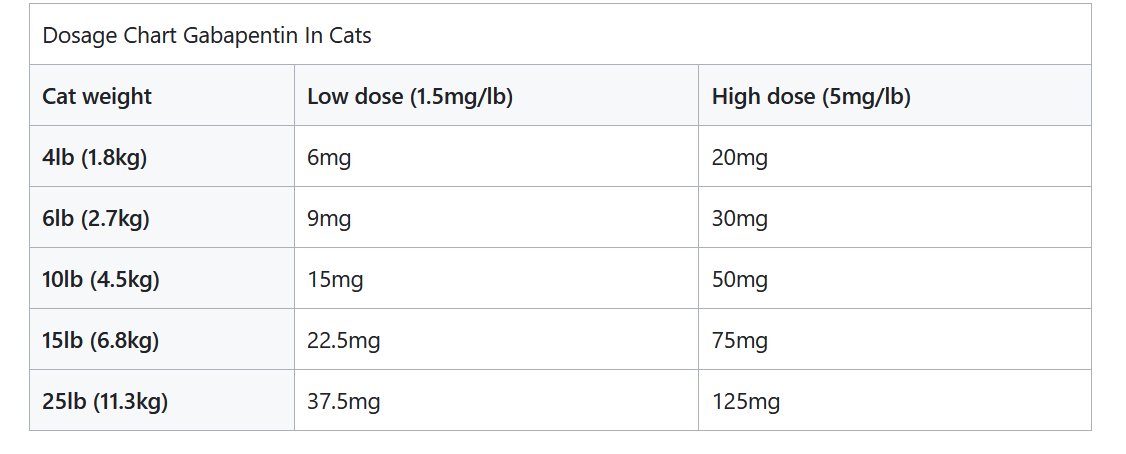Feline parents, have you ever been on a car ride with your cat and had to put up with incessant meowing, vomiting, peeing, and you know what else? Stressful, to say the least. Fortunately, vets are looking to the medication Gabapentin (Neurontin) to help alleviate the anxiety of our furry friends. But did you know that this drug is also used to soothe seizures and pain? Let’s dive into the world of Gabapentin and cats and see what we can discover!
Gabapentin is a great tool for helping manage pain in cats that are dealing with cancer, arthritis, and neuropathic pain. It can also be used with other drugs to manage seizures caused by epilepsy. And it’s a gamechanger when it comes to reducing stress for cats undergoing vet check-ups – research indicates that administering this medication 90 minutes prior to the visit results in far less stress-related symptoms.
So, how safe is it? Generally, Gabapentin is safe for cats as long as you follow your vet’s instructions and dosing guidelines. Typical doses range from 1.5-5 mg per pound every 8-12 hours, but this will vary depending on what issue your cat is experiencing, age, and weight. It’s also possible that your furbaby can develop a tolerance over time and will need an increased dose.
Side effects are generally mild and can include sedation, weight gain, ataxia, lethargy, and diarrhea. Make sure to speak to your vet if your cat is also taking any over-the-counter antacids, hydrocodone, or morphine, as adverse reactions may occur. Gabapentin isn’t for every situation, however, so it should be avoided in cats with allergies, hypersensitivity, pregnancy, and nursing, and always speak with your vet prior to administering it.
In conclusion, Gabapentin can be a key part of an anti-pain, anti-anxiety, or anti-seizure plan for your cat. If prescribed by a vet and monitored carefully, it can be an effective and safe medication for cats and dogs.

What is gabapentin prescribed for in cats? Gabapentin is an effective analgesic that can reduce chronic pain caused by conditions like arthritis or cancer. It can also be used for treating intervertebral disk disease-associated pain and managing feline hyperesthesia syndrome, a condition characterized by extreme sensitivity of a cat’s skin, commonly on the back near the tail. Furthermore, this medication is often administered to ease anxiety in cats, especially before vet visits, or when they must confront people or other animals. Finally, gabapentin is sometimes prescribed with other medications to help manage cat seizures.
The exact mechanism of action remains unknown, however, it is believed that gabapentin works by inhibiting the release of excitatory neurotransmitters, and may also resemble the effects of GABA (γ-aminobutyric acid), an inhibitory neurotransmitter. The dosage varies based on age, weight, and the underlying issue, however, typically ranges from 1.5 to 5mg per pound every 12 hours. In cases of seizures, dosages may range from 2.5 to 10mg per pound every 6 to 12 hours.
Gabapentin should generally take one to two hours to start showing effects to relieve situational anxiety. Meanwhile, treatment for pain requires the dosage to be titrated up slowly, thus, it may take longer before an effect can be observed. For seizure management, it may take a few weeks to see a reduction in frequency. An effect of gabapentin wears off quickly unless the cat is suffering from kidney or liver diseases, therefore, it is usually given two to three times a day.
Now, it is important to note that long-term use of gabapentin for elderly cats with chronic pain can often be maintained for the remainder of their life. The three most common side effects are sedation, drowsiness, and lethargy, which can be countered through a slow titration of the dosage. Other side effects that may appear are uncoordination or weight gain, as well as rare cases of allergies. Finally, if a higher dosage is prescribed, it can be potentially dangerous, so it is of utmost importance to never exceed the recommended amounts.
In closing, when it is time to stop taking gabapentin, those treating seizures should taper the dosage off slowly over a couple of weeks to avoid triggering them. All in all, gabapentin is a safe and effective medication for helping cats manage a variety of medical conditions. The key to success lies in accurately measuring and following the vet’s instructions.
Further Reading and Bibliography
The pharmacokinetics of gabapentin in cats
Pharmacist’s Corner_ Gabapentin in Veterinary Medicine – Veterinary Medicine at Illinois





